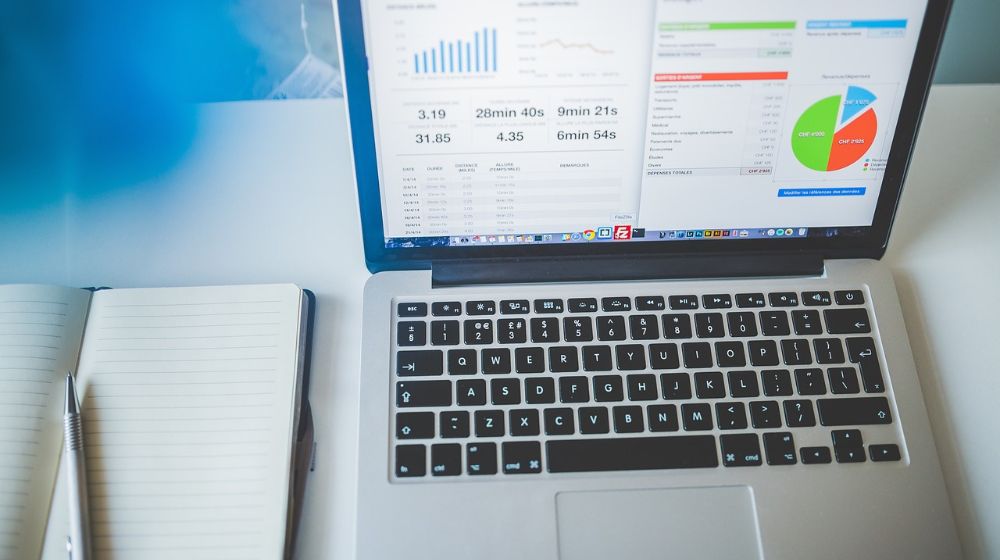Business
Algorithmic Trading 101 For Humans

Algorithmic trading is when one uses a specially-designed computer program to buy or sell stock at any time that certain conditions are met.
These programs allow for a much higher volume and frequency of trades than any human being could carry out manually in a given time. Furthermore, a good algorithm can be extremely profitable for those who use it.
The Basics of Algorithmic Trading
Algorithms are highly flexible creations that can perform a number of tasks in the length of time that it takes a human to blink.
Algorithmic trading takes advantage of this fact in a number of ways, allowing people to make more money than they would be able to make if they were simply manually monitoring and trading stocks.
Here is a reasonably typical example of just one way an algorithm can be used:
Let’s say Tom has his eye on a dual-listed stock (i.e. a stock that is available on two separate markets at the same time).
He can program a computer to monitor the stock’s price in both markets.
He can also command the computer to notice when the stock is less expensive on one of the markets, automatically buy the stock on that market, and then turn around and automatically sell the same stock on the market where it is more expensive.
Every time the computer does this, Tom makes money.
Furthermore, if the computer is programmed to perform this simple task enough times for enough different stocks, Tom may make a significant amount of money—almost certainly more than he could have made watching and trading those stocks himself.
Tom has learned the joys of algorithmic trading.
[ms_divider style=”normal” align=”left” width=”100%” margin_top=”30″ margin_bottom=”30″ border_size=”5″ border_color=”#f2f2f2″ icon=”” class=”” id=””][/ms_divider]
[ms_featurebox style=”4″ title_font_size=”18″ title_color=”#2b2b2b” icon_circle=”no” icon_size=”46″ title=”Recommended Link” icon=”” alignment=”left” icon_animation_type=”” icon_color=”” icon_background_color=”” icon_border_color=”” icon_border_width=”0″ flip_icon=”none” spinning_icon=”no” icon_image=”” icon_image_width=”0″ icon_image_height=”” link_url=”https://offers.thecapitalist.com/p/warrenbuffet/index” link_target=”_blank” link_text=”Click Here To Find Out What It Said…” link_color=”#4885bf” content_color=”” content_box_background_color=”” class=”” id=””]Warren Buffett Just Told His Heirs What He Wants them To Do With His Fortune When He Dies. [/ms_featurebox]
[ms_divider style=”normal” align=”left” width=”100%” margin_top=”30″ margin_bottom=”30″ border_size=”5″ border_color=”#f2f2f2″ icon=”” class=”” id=””][/ms_divider]
Some Common Algorithmic Trading Strategies
- Trend Following Strategies: The computer makes trades when previously- identified desirable trends in the market occur.
- Arbitrage Opportunities: The above example of Tom using the computer to buy dual-listed stocks low in one market and sell them high in another.
- Trading Range, also known and Mean Reversion: While stocks all reach high prices and low prices, they tend to have an average value that they return to in time. In this strategy, the computer identifies that average and buys when the stocks are below average and sells when they are above average.
These are only a few of many strategies that are used in algorithmic trading.
Advantages of Algorithmic Trading
According to Nasdaq, algorithmic trading comes with a number of advantages, some of which have already been mentioned above.
Speed and accuracy are big ones, of course, as well as the elimination of human error in entering stocks manually.
Another huge advantage is the removal of human emotion from the equation. Trading stocks is a numbers game, best dealt with in the most logical way possible. We humans, however, get our emotions tied up in our decision-making processes all the time.
When we make stock decisions, we are prone to fear, greed, superstition, gambling, and a number of other natural human propensities.
A computer program works on the “if a, then b,” principle, and eliminates emotion from the game.
For some, this removes the fun from the experience—for others, it removes the risk.
Lastly, algorithmic trading is much less expensive and requires far less time commitment on the part of the investor.
Algorithmic Trading Lets Investors Analyze What Has Worked In The Past
It can be very difficult as humans to identify which of our past decisions have worked out well and why.
The same is not true of computer software.
Computers can analyze their past market decisions and allow investors to reach conclusions about which parts of their algorithms might work and which ones to scrap.
As Great as Algorithmic Trading Can Be, There Are a Few Downsides
The ability to write a good algorithm requires many qualities: good computer programming skills (or the ability to pay someone who has them), good analytical skills, and access to past market data.
Also, it is naïve to assume that you will be the only investor running algorithms on the stock market.
A large number of people doing so means that some transactions are now taking place in literal milliseconds, and prices can change that quickly.
Not only does this make it difficult for people attempting to trade manually, but it can also mean that your particular algorithm can be interrupted before it finishes doing its job.
The example of the latter situation given on Investopedia is that of an arbitrage strategy where your algorithm buys on one market but the price on the other market changes so rapidly that it’s no longer a gain, and your algorithm doesn’t complete the transaction.
You now own stock that you intended to sell, not keep.
What This Means for Investors
When well-tested and used responsibly, algorithmic trading can be a godsend.
It allows time-strapped people to take part in the stock market when they could not otherwise and allows people to make more money with less effort and less human error.
However, overuse of algorithmic trading can make life much more difficult for investors.
Overall, like most technology, it is a double-edged sword but when used correctly the results can be spectacular.

















